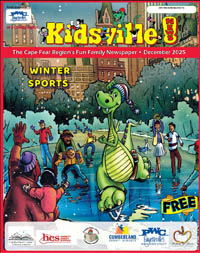 Publishers note: This article is reprinted with the courtesy of The Washington Post.
Publishers note: This article is reprinted with the courtesy of The Washington Post.
Community newspapers offer insight into the heart of communities like no iPhone, Android or social media platform ever could. The article below is relevant and explains why extinction is inevitable if change does not happen.
They wrote about rock music and marijuana, when those were actually daring things to write about. They used profanity sometimes, when even sometimes was rude and shocking. In the back, past the ads for head shops, porn theaters and escort services, there were classified listings that featured a strange code of longing and desire: “SWM seeks SWF for LT relationship, light S&M.”
“Alternative” weeklies flowered in the 1970s in just about every American city, large and small. They were the alternative to the straitlaced establishment press and the successors to the ragtag “underground” papers that had raged against the Vietnam War. Less angry and more professional than their forebears, they still raged against authority when a new edition dropped outside the coffeehouse or club.
Free-distribution alt weeklies — all those New Timeses and Real Papers — aren’t quite dead yet, but the fraternity is in some distress. The Boston Phoenix checked out in 2013. The San Francisco Bay Guardian went under in 2014 (revived online in 2016). The Philadelphia City Paper shut down in 2015. The Baltimore City Paper said last month that it will close, too.
The news on Tuesday was another downward leg on the patient’s chart: Facing declining revenue, the Village Voice — the hipster granddaddy of alt weeklies — said it would end its print edition and publish online only. And so, after 62 years, the Voice will no longer beckon from newsstands and street-corner boxes, tempting the sophisticated or the merely curious. Henceforth, cosmopolitanism will come only on a computer screen.
Alt weeklies pioneered what the Smartphone Generation now takes for granted. They wrote about things that the mainstream media (before it was ever called that) was indifferent to or ignored. They covered nightlife, criticized the arts, hectored the newspapers and TV stations about their reporting. They wrote about politics from a subjective and unapologetically partisan perspective, almost always a lefty one. They sometimes exposed wrongdoing and malfeasance in their midst; the alt weekly Willamette Week in Portland, Ore., won a Pulitzer Prize in 2005 for revelations about Gov. Neil Goldschmidt’s molestation of a 14-year-old girl 30 years earlier.
Much of that is available on a screen now, of course. But unlike their digital children — the HuffPosts, Jezebels and Slates — the alt weeklies offered one important difference: They focused on their towns, not everyone’s.
They were intensely local, riffing on a city’s politics, environment, culture and people. They offered what no national news sites now does — consideration of a common municipal space. It might be Greenwich Village, Logan Circle or Silver Lake, any of the urban neighborhoods across America where gays, feminists, punks, greens, rappers and activists crossed and consorted. The places where the music and drug scene, political movements, and the sexual revolution were quaking long before the waves radiated to places colonized by Walmart and Applebee’s.
For suburban teens growing up in the 1970s and ’80s, the alt weeklies were a passport to the vibrant and mysterious adult scene happening just a few miles down the interstate.
The alt and underground press of the early 1970s “opened my eyes to a world I knew nothing about and wasn’t part of,” said Dan Kennedy, a longtime Boston Phoenix writer who became a journalism professor. “The counterculture of music and left-wing politics — those were appealing to me. They gave me a wider perspective, albeit a left-wing one.”
Patricia Calhoun, who still edits the alt weekly Westword in Denver 40 years after she founded it, says she started the publication “with the premise that Denver was a more interesting city than the mainstream media made it seem and that it would be easier to start a paper than to get a real job.” She now reflects: “We were right about the first part, but not the second.”
At their peak, Calhoun says, alt weeklies served as a kind of community bulletin board for their young readers. Copious entertainment and restaurant listings were a staple early on. The classifieds were today’s neighborhood email lists. Need a roommate, a bass player, a girlfriend? Go to the dense black type in the back pages. “If you wanted an apartment in Chicago in the early 1980s, you had to get the Chicago Reader the minute it came out,” she said.
Over the years, alt weeklies evolved from their shaggy roots to incorporate the consumerist innovations of “city” magazines — the lists of best hamburger joints and bars and such. But their innovations were in turn co-opted by the mainstream. Newspaper writing became more discursive and narrative-driven, aping the style of the long stories that anchored each alt-weekly issue.
Often, the journalism that alt weeklies produced was top-shelf. The Voice published columns by its co-founder, Norman Mailer; jazz and media criticism by Nat Hentoff, and the muckraking work of Wayne Barrett, who chronicled the rise of a brash New York real estate developer named Donald Trump. The Phoenix’s music critic, Lloyd Schwartz, won a Pulitzer for his work in 1994. The L.A. Weekly’s Jonathan Gold won one in 2007 for restaurant criticism.
And after The Washington Post had to give back the Pulitzer it won for a fabricated story by Janet Cooke in 1981, the award went to . . . Teresa Carpenter, a writer at the Village Voice.
Given their attention to the new and overlooked, the scrappy papers could play an outsize role as tastemakers. The most famous and perhaps most important piece of rock criticism
came from one of them — Jon Landau’s 1974 column in the Boston Real Paper in which he declared, “I saw rock and [roll’s] future and its name is Bruce Springsteen.” Landau’s critique became a promotional prop for Springsteen’s record company and is widely credited for boosting him to mega-stardom (a year after publishing his piece, Landau became Springsteen’s manager and a co-producer of his breakthrough album, “Born to Run”).
As the alt weeklies have faded, their journalists have seeded large parts of the media landscape. Among others, MSNBC host Chris Hayes started at the Chicago Reader; New York Times writer Mark Leibovich and the New Yorker’s Susan Orlean came from the Boston Phoenix. The alumni from Washington’s City Paper include Jack Shafer of Politico, Jake Tapper of CNN, Erik Wemple of The Post and the late David Carr of the New York Times. (Long ago, The Post stocked its new Style section with writers plucked from the weeklies, such as music critic Richard Harrington and TV critic Tom Shales, another Pulitzer winner.)
It’s too simple to say that the Internet undermined the alt weeklies, but it largely did. By the late 1990s, they had begun to lose their lucrative classified ad base to Craigslist and other free sites. Chain stores invaded cities, blowing away a cadre of local alt-weekly advertisers. Thanks to social media, the remaining momand-pop shops in town could soon self-advertise, bypassing the City Papers altogether. The revenue drain was devastating.
A more nebulous question concerning the fate of alt weeklies is the one posed by Kennedy, the journalism professor. “I can remember many heartfelt conversations when I was at the Phoenix [from 1991 to 2005] where we asked ourselves, ‘In what way are we really alternative?’ Because it wasn’t really clear any more. We knew in some ways that the Globe was to the left of us.”
Westword’s Calhoun isn’t troubled by that existential matter, however. “It’s our goal to keep corrupting the youth of America into the pleasure of reading and questioning authority,” she says. “We still think we’re winning at that.”
Marc Fisher and Hank Stuever contributed to this report.
The original article can be found at: http://wapo.st/2vRheUn.

 How to resolve AdBlock issue?
How to resolve AdBlock issue? 








